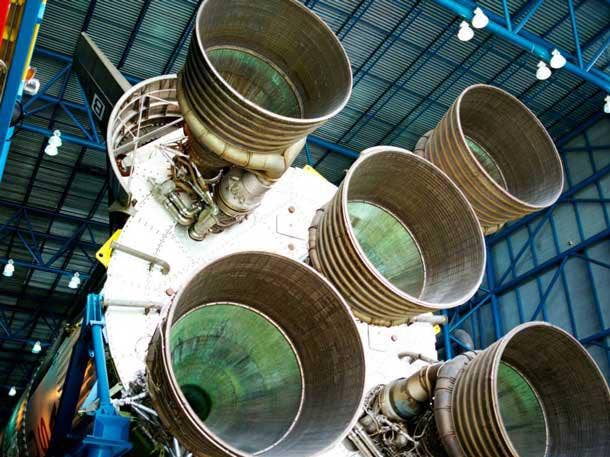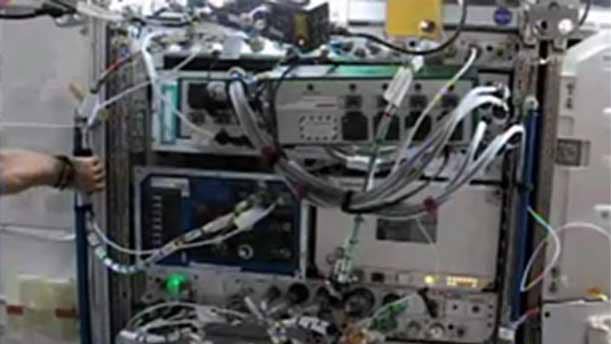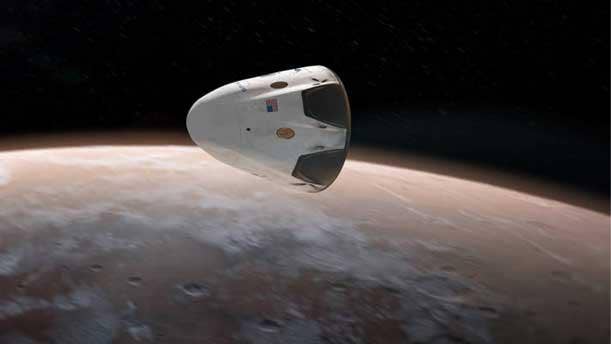6 Ways HPE's Spaceborne Computer Is Driving Edge Computing Innovation

Supercomputing In Space
Hewlett Packard Enterprise is for the first time bringing high-performance computing capabilities to astronauts aboard the International Space Station.
HPE said Tuesday that it is bringing the astronauts what it calls "above the cloud supercomputing services" that can be done in real time at the edge in space rather than transmitting that data to and from earth.
"Instead of having to wait while we feed this data through a straw down to earth, we can now do the processing right there on the Space Station," said Dr. Mark Fernandez, Spaceborne computer payload developer and Americas High Performance Computing (HPC) Technology Officer for HPE.
The HPE Spaceborne Computer that is driving the intelligent edge innovation is based on the HPE Apollo 40 class supercomputer. The Spaceborne computer passed a one-year resilency test in space, achieving 1 teraflop (a trillion floating-point-operations-per-second) performance.
"It's a pretty powerful computer and we've proven that it can function [in space] and give you the right answers," said Fernandez.
The return to earth for the Spaceborne Computer is expected to be completed next February or March on SpaceX CRS-17. The commercial resupply service mission is being contracted by NASA on a Falcon 9 rocket from SpaceX, the private company founded by Elon Musk.

Seven Invention Disclosures, Hardened By Software
HPE has seven "invention disclosures" that will ultimately drive intelligent edge computing breakthroughs in commercial applications on earth, said Fernandez.
Those invention disclosures are aimed at improving HPE solutions focused on "environmental issues" at the intelligent edge rather than in traditional data center applications, said Fernandez.
HPE cannot disclose the seven "invention disclosures" until they have been vetted for trademarks and patents.
The seven invention disclosures are aimed at driving major commercial intelligent edge computing breakthroughs. "For years, if not decades, we have been dumbing down the compute nodes so that when they notice something they send it out to a data center manager," said Fernandez. "At the highest level we have taken that model and turned it upside down. We have a very thin layer of software that handles each and every node, and each and every environmental issue with a reaction algorithm."
HPE has also incorporated a "buddy system” of sorts for the Apollo 40 Spaceborne computer. "Every node checks on his buddy and everybody checks on his node," says Fernandez. "They are not only self-checking. They are checking their buddy. Each node has the ability to control its buddy as if it was the data center manager."
Ultimately that means the Spaceborne intelligent edge computing powerhouse is self-healing, correcting temperature or power changes that could stop it from functioning in space. "It takes the appropriate action according to the algorithm," said Fernandez. "These aren't yet artificial intelligence or machine learning but we are a step closer to that."
The software powering the Apollo 40 is sure to have "applicability at the edge on earth," said Fernandez, citing the seven invention disclosures.
"We collectively call the whole thing 'hardened by software,’" he said. "We think this is pretty significant. Hence the company is making the investment in the seven invention disclosures. All seven are in some stage of the process."
Beyond the awards already won by the Spaceborne team, the invention disclosures are what the HPE team is most proud of, said Fernandez. "We are pretty excited," he said. "It shows what we have done is sufficiently unique for use in space but with applicability here on earth. So HPE is making the investment to see if they are patentable."

Intelligent Edge Computing: Real-Time Answers
The Spaceborne computer's ability to do the intensive analysis under the incredibly harsh conditions in space will have a major impact on intelligent edge computing on earth, said Fernandez (pictured).
The biggest edge computing impact is avoiding the "loss of signal" and other delays that come from sending the data back to earth to be processed, said Fernandez.
The high-performance computing data crunching done in space opens the door for the astronauts to get real-time intelligent edge computing answers. "If you get your answers faster and something is happening, you can react to that faster," said Fernandez.
Up until now, the space explorers aboard the International Space Station have been forced to wait for "allocated bandwidth" from NASA to do data analysis. "They don't give it to you 7x 24x365," said Fernandez, speaking of the bandwidth in space. "You have to wait for your time slice and then when your time slice comes up you only get to use the bandwidth you have been given. It is that precious."
Performing the calculations on the HPE Spaceborne Computer will allow the scientists to do the calculations at a speed that is comparable to an earth network running at 2 GigE. "We can get the data from any experiment on the ISS [International Space Station] at internet speeds here on earth," said Fernandez. "And we are open 7x24 x365."

Supercomputing Survival: Withstanding The Elements Of Space
The Spaceborne Computer has proven that the HPE Apollo Class supercomputer can survive the space journey and function in even the harshest conditions at the outer most edge: space itself.
"The original mission was could we package up a state-of-theart supercomputer to survive the journey to space with all the G Forces, the shake, rattle and roll of launch, the coldness of space," said Fernandez.
"We have shown the hardware and software works," exclaimed Fernandez. "Now let's run some real space explorer NASA applications."
The HPE Spaceborne intelligent edge computing breakthrough comes with multiple countries and even private companies such as Musk's SpaceX and Amazon CEO Jeff Bezos' Blue Origin investing heavily in space exploration.
Fernandez compared the drive to get to Mars to the gold rush in the first half of the 19th century. "In the forty-niners gold rush, the ones that made money sold blue jeans and pickaxes," he said. "We want to sell Spaceborne computers to everybody going to space."
The above the cloud Supercomputing services is a call to action for all those countries and private ventures making the trip to space to team with HPE, said Fernandez.
"We have a state-of-the-art supercomputer, the locker certified for flight readiness and we can take to space whatever hardware you need with the hardening with software to protect it," he said. "So let's go and pick the software that is needed. We are open for business."

Power And Cooling In Space: The Ultimate Test
The power and cooling capabilities of the HPE Spaceborne Computer have passed the ultimate test. That is sure to pave the way for intelligent edge computing in harsh conditions such as for storm-battered offshore oil drilling rigs or even for helping firefighters get fiery blazes under control.
Once the HPE Spaceborne computer had passed the difficult takeoff, HPE had to prove the system could be power and cooled in space. "This isn't an earthly data center," said Fernandez, speaking about the challenges faced by the Apollo 40 class system. "It's a spaceship."
The Spaceborne computer has a "mix of air cooling and water cooling," said Fernandez. "
"There are times when you don't have sufficient air to cool something but you might have a little bit of water so we can do that mix, that is part of our [water-cooled] locker," he said.
That water-cooled locker is a far cry from the standard data center rack enclosure.
The HPE Apollo 40 also includes power monitoring that constantly scans for "dirty" power. "When you are on a spacecraft and all the power comes from solar cells, it is not data center quality," said Fernandez. "It is not your local electric utility quality power coming in. We have software that monitors that and adjusts the processing accordingly."
When the temperature in space changes dramatically, the processing on the system is adjusted automatically. "We have a mantra that it is better to run at full speed than slow speed," said Fernandez. "It is better to run at slow speed than not run at all. It is better to be not running at all than get damaged."

Getting The Right Answers
HPE proved with the original phase of the Spaceborne computer experiment that the HPE Apollo 40 class system was rugged enough to get the "right answers" under the harshest edge computing conditions.
"The question was would we get the right answers? Would we get the right answers tomorrow and would we get them for a year?" asked Fernandez. "We can now say 'Yes' to all those questions. Now we have got data and proof and multiple benchmarks. We are open for business. We have proven that this hard work and this software stack works."
Now, HPE is ready to go do "some real work" with the astronauts on the International Space Station. "We want the computers to be self-sufficient to enable self-sufficient explorers," said Fernandez. "We have shown the hardware and software works."
HPE has a software hierarchy that monitors for fault management—detecting and correcting any malfunction in the most hardened edge computing environments. "We are working to make this thing autonomous and self-sufficient with its own instruments of self-care and fault management, and it has proven itself over the last year," said Fernandez. "We have encountered a half-dozen or so anomalies and our software has properly reacted. The system continues to work to give you the right answers. That's pretty exciting."

The Next Frontier: Mars
The advances already achieved by the HPE Spaceborne computer set the stage for exploring the next frontier: Mars.
The Spaceborne computer is going to be "critical" to making a future mission to Mars, said Fernandez. "Imagine yourself on Mars and and you ask a question to earth, and it takes almost an hour for you to get the answer back," he said. "What you want to do is take a self-sufficient computer with you that can give you the answers immediately. That is the ultimate step."
Fernandez said it is unlikely a mission to Mars would be undertaken without a supercomputer. "I don't think you are going to send space explorers to live in a Mars habitat without some type of local computational resources," he said. "We can't live here on earth without our computers, our tablets, our cellphones, etc. Just imagine even considering living on Mars without that type of capability."
The current methodology is to build separate mission-critical components on the rockets with dozens of turnkey systems that are all designed to do one thing such as launch, descent, communications, navigation, etc.
"I'm a big advocate that you need a general-purpose supercomputer— hardware there [in Mars] with you," said Fernandez. "Software is weightless. It is massless. So you can load up this one supercomputer with all the software here on earth that you may think you might need. That is the ultimate goal in terms of the mission to Mars."